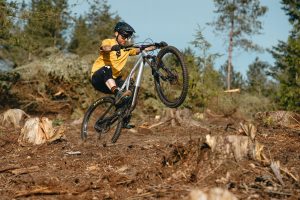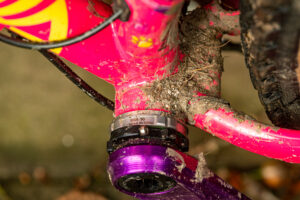If you want to keep warm and dry when riding, a good mountain bike base layer is key. Here's our pick of the best.
We’ve reached the time of the year when the mercury is dropping but the outdoors are still ever so tempting. Riding your bike should never be an uncomfortable or miserable experience. And when the weather seems grey and chilly, layering up in the best cycling base layers is one of the best ways to keep cosy.
A good base layer is functional, versatile, well-ventilated and one that’s available in a wide range of sizes. Ideally, you want to look for something that’ll help you manage your body temperature well. You don’t want to get too warm, you’ll want it to wick moisture away from your skin effectively, but also insulate properly.
Don’t forget to pair your base layer with a great MTB jersey and the best mountain bike jacket you can to stay warm, dry and cosy – so you can focus on enjoying the ride!

Specialized DriRelease Tech Tee
Specialized DriRelease Tech Tee
Casual tee that doubles as a great base layer
Material: DriRelease | Colours: Black | Rating: 10/10
Reasons to buy:
- Comfortable
- Quick-drying
- Versatile
Reasons to avoid:
- Not a specific base layer
For what is basically just a t-shirt in a technical fabric, the Specialized Drirelease Tech Tee doubles as a great base layer. The polyester/cotton mix does a great job of wicking away sweat and moisture, while feeling lovely and soft against skin. There’s nothing fancy about the fit, but it just works, whether as a casual summer riding jersey or extra layer during the winter.
Read our full review of the Specialized DriRelease Tech Tee
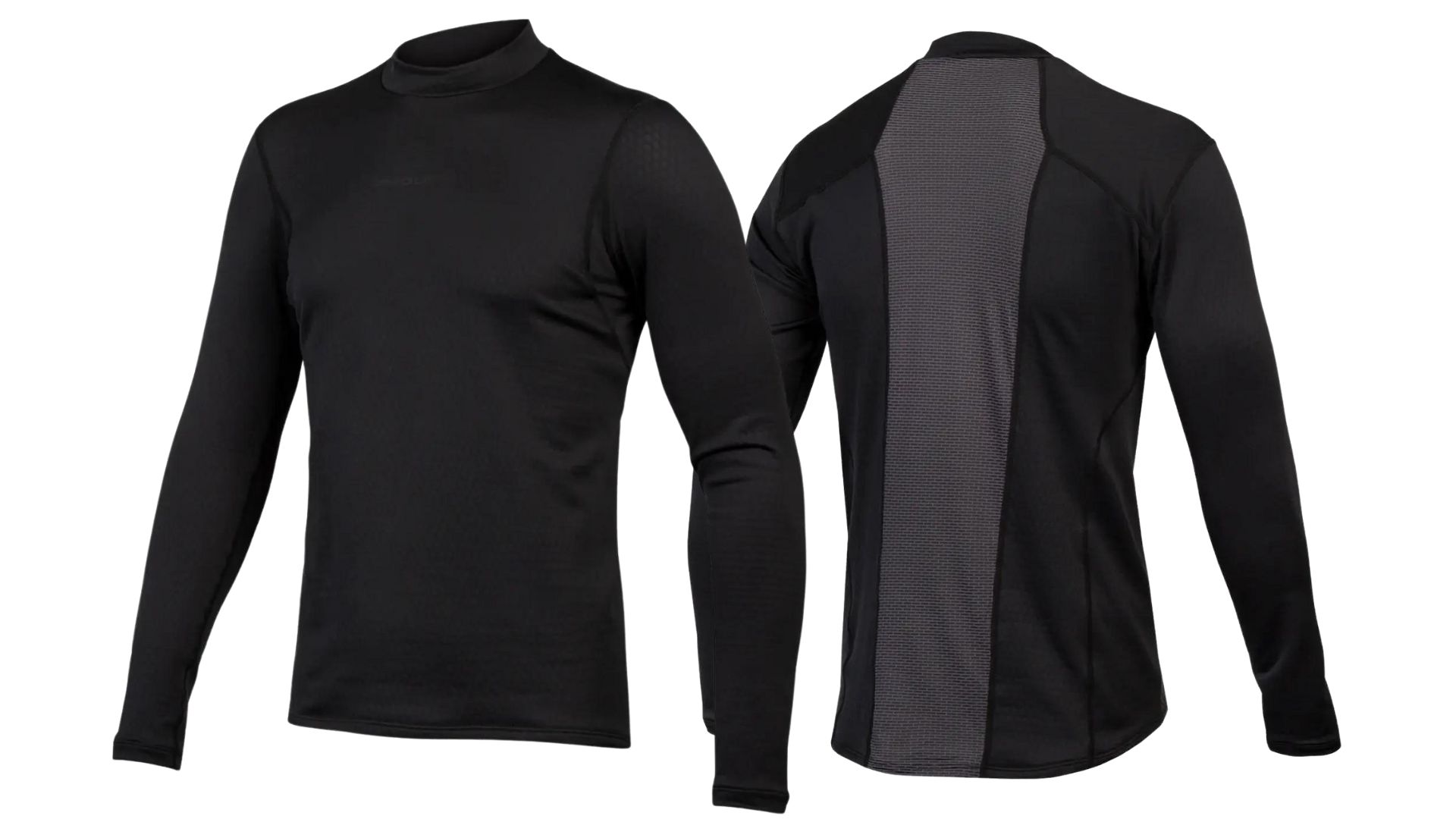
Endura Transloft base layer
Best base layer for cold conditions
Material: Primaloft | Colours: Black | Price: Long sleeve- £39.99, short sleeve- £34.99 | Rating: 8/10
Reasons to buy:
- Good insulation
- Stretchy fit
- Good value for money
Reasons to avoid:
- Slower wicking fabric
- For warmth, you’ll need to use a shell with it
Endura Transloft base layer is made from 47% recycled Primaloft Energy honeycomb fleece-lined fabric. It all packs up really small and can be easily fitted into a hip pack or even a back pocket.
If temperature management is your priority, Transloft base layer does a good job at it. Anywhere between 0-15 degrees celsius and you should feel cosy riding at a consistent pace while wearing this layer. That being said, if it is colder than that, especially considering the wind chill factor, you should consider coupling this layer with a shell.
What’s more, this base layer also offers a bike-specific fit and length, a wide range of sizing options (S, M, L, XL, XXL) along with the options of choosing between a long sleeve and short sleeve.
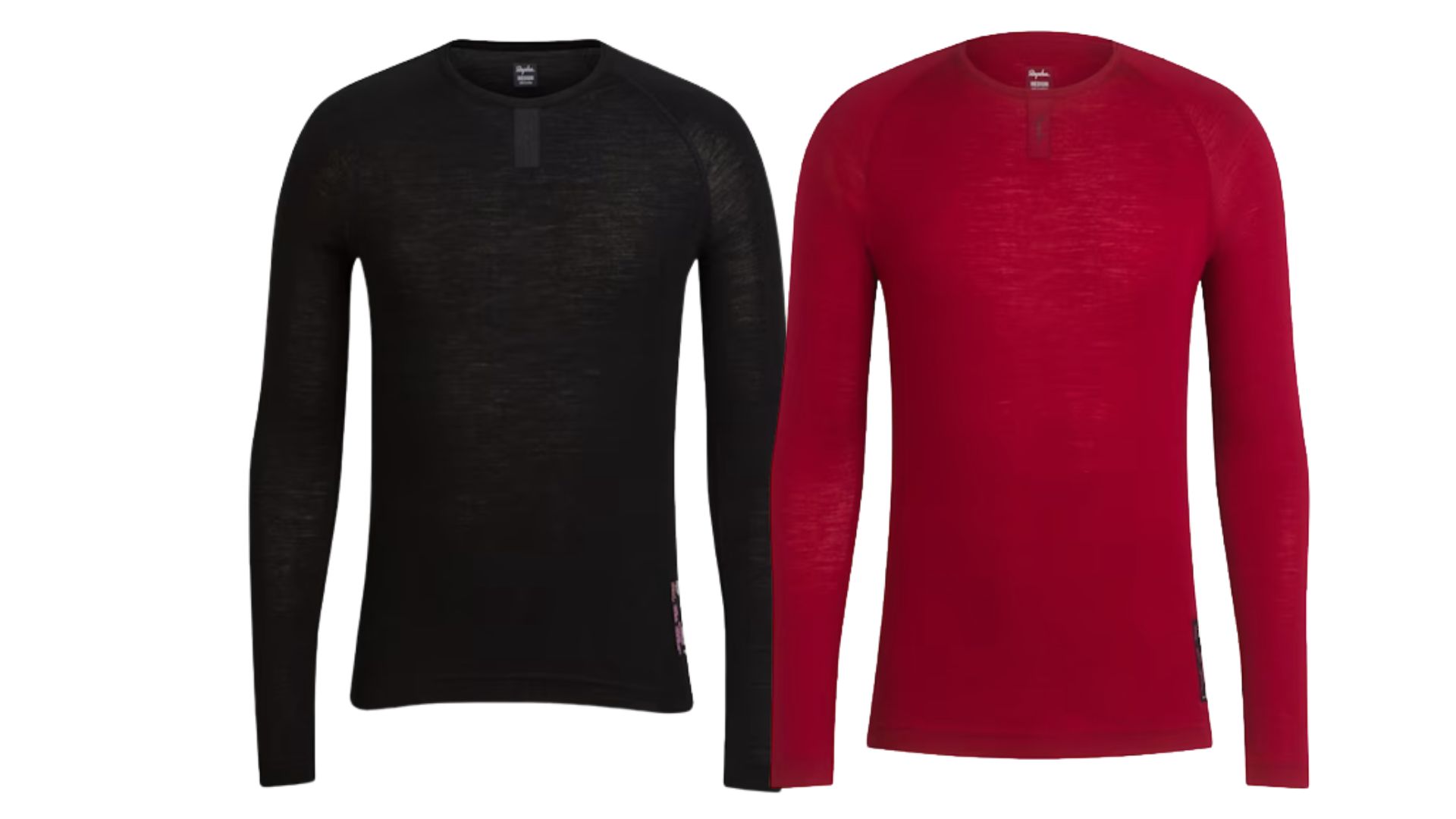
Rapha Merino base layer
Best merino base layer for cycling
Material: Merino Wool | Colours: 2 options in women’s collection and up to 5 in men’s
Reasons to buy:
- Versatile
- Wide size range from XXS to XXL
- Odour resistant
Reasons to avoid:
- Slightly baggy fit
- Fewer colour options available in the women’s collection
Rapha Merino base layer is made of New Zealand Merino wool which has excellent thermoregulation properties. This means that it’ll work as an insulating layer when it’s cold and keep you cool when it’s warm. The best part is that you can wear it for multiple days in a row on sweaty rides and the material won’t stink.
The cut is not super tight but fits well. You can find it in both long-sleeve and short-sleeve versions. Merino wool offers anti-bacterial and odour resistant properties, so you can say goodbye to the insecurities of stinky arm pits.
The men’s collection has several colour options and the women’s collection only has a couple of options. The sizing range is between XXS and XXL.

Gore Windstopper base layer
Best base layer for wind protection
Material: 88% polypropylene, 8% elastane, 4% polyamide | Colours: White and black | Rating: 10/10
Reasons to buy:
- Comfortable fit
- Windproof
- Water resistant
Reasons to avoid:
- Too hot for summer rides
- A bit expensive
Gore Windstopper base layer cleverly combines the best properties of several materials. For example, the polypropylene makes it fast-wicking. The water–resistant and windproof Windstopper fabric panels keep your vulnerable parts warm. Plus, it packs small so you can stash it just about anywhere. Although, we think that may not be necessary seeing as it’ll be the layer closest to your skin while you ride.
With a close-to-the-body fit, you can wear a baggy jersey on top and a cold day’s ride should feel a little more comfortable. Although the polypropylene fabric helps with wicking, the combination with Windstopper fabric means that the wicking may not happen as quickly as the other base layers.
You can find this base in size ranges between S and XXL. It’s available in long sleeve, short sleeve and sleeveless.
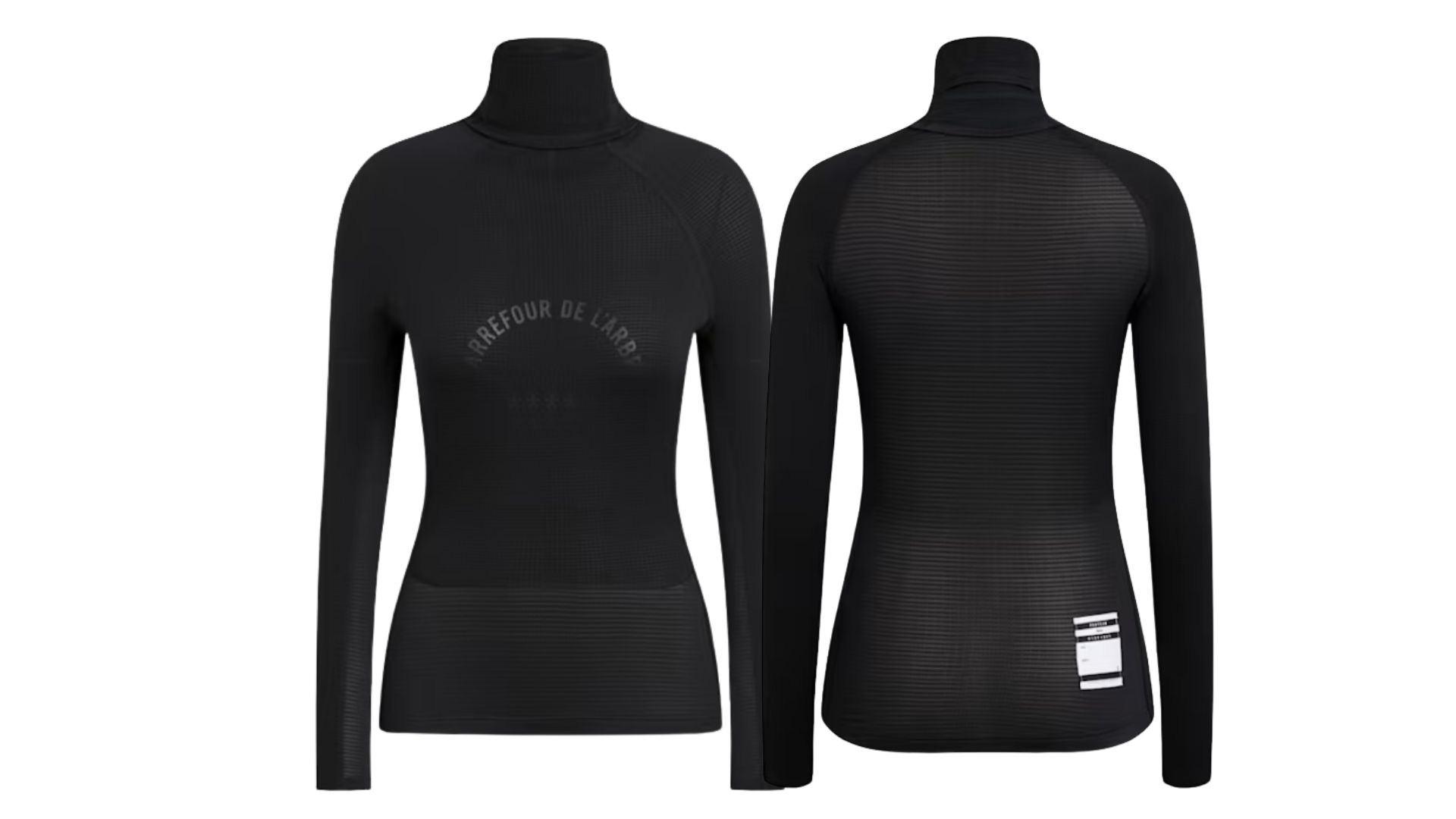
Rapha Pro Team Thermal base layer
Best base layer for warmth on very cold days
Materials: 84% Polyester / 16% Spandex (front), 91% Polyester / 9% Spandex (back) | Colours: Black, Grey, Blue, Purple
Reasons to buy:
- Great attention to detail with the design
- Super warm and cosy
Reasons to avoid:
- The snood collar can feel a bit tight
- Fabric isn’t very stretchy
- Limited size range
If you’re put off riding in cold weather, Rapha’s Pro Team Thermal base layer might the solution. From an extended turtleneck collar that doubles as a buff, to a ponytail port at the back of the neck, this base layer isn’t just a cosy one that keeps you warm and insulated, but also a piece of kit that can see you through many adventures.
With excellent moisture wicking capabilities, the Pro Team thermal base layer helps you regulate your core temperature as you ride. The snood collar can be slightly tight on your face and the condensation build up on it, when you also factor in the wind chill, can make it uncomfortable and cold on your face. If you don’t plan on pulling it to your face, though, it’s a great neck warmer.
As far as super cold temperatures are concerned, Rapha Pro Team Thermal base layer should do a good job at keeping you warm on your ride. It’s available in four colours and sizes between XXS and XL.
How we tested
Each of the base layers included above have been thoroughly tested by our team of expert reviewers. They will have been ridden on several rides in a range of conditions, dependent on the purpose of the base layer. This includes cool and cold weather, and wet and dry conditions. Jerseys were scored on how they performed in terms of fit, comfort, warmth, wicking and durability.
Base layers were also washed and dried to ensure they retained their performance and fit after being laundered according to manufacturers guidelines.
What to look for in a cycling base layer for mountain biking
If you’re looking for a comfortable, effective, high performing base layer, then you’ll need to think about the following elements.
Hot or cold conditions – if you’re using the base layer for cold conditions, the focus will be on providing insulation and warmth, so choose one that provides this with features like wool fabric, long sleeves and higher neckline. If it’s for hot conditions, a fine mesh base layer with high wicking properties and short sleeves or sleeveless would be best.
Sleeve length – Base layers usually come in one of three sleeve lengths: vest or sleeveless, short sleeve and long sleeve. Which one you go for will depend on the purpose of the base layer and your own personal preference. Longer sleeves are ideal for cold conditions as they provide more coverage and insulation.
Fabric – As a technical garment, base layers can be made of any number of materials. Most common are insulating fibres such as wool, merino wool, polyester or acrylic. Some base layers will also have additional fabrics such as windproof membranes or lofted down.
Garment cut – A good base layer should fit close to the skin, and should also be long enough – particularly at the back – that it covers the lower back when leaning forward over the bike. This means you should be able to tuck it in to your shorts, trousers or liner shorts to help prevent it riding up while riding.
How do I choose the right fit for a base layer?
The base layer goes closest to your skin, and should fit close to the skin but without feeling tight or constrictive.
After you’ve chosen one with materials that are ideal for your situation, you should think about what’s the next layer that goes on top of it and how that fits you. If your jersey is baggy, then you can get away with a thicker or baggier base layer. If your jersey is close-fitting to your body, then you’ll need your base layer to match that.
How do I choose the right sleeve length?
This completely depends upon the conditions you hope to use the base layer in.
In warm weather, you should go for a short sleeve or sleeveless base layer. If you’re using it in cold weather, you should go for a full-sleeve base layer, ideally insulated and worn with a warm jersey and a gilet or jacket.
What’s the best material for a base layer?
If you’re looking for a versatile base layer to be used throughout the year, then merino wool fabric works well. Providing very efficient thermoregulation and natural anti-odour properties, merino wool fabric is excellent for multi day rides. Synthetic fabrics are quick-wicking and great for high performance usage. They’re also super stretchy and great for warm weather rides where you might sweat a lot.
Are base layers just for cold conditions?
While cycling base layers are ideal for keeping you warm when riding in the cold, they’re also ideal for keeping you cool and dry while riding in hot conditions, though you might want to opt for different base layers for each of these functions.
In cold weather, base layers can add an extra layer of insulation, trapping air to help keep your core temperature up. The base layer will also help wick sweat away from the skin which will avoid that cold, clammy feeling and again help you feel warmer.
It’s for this reason that base layers can also work well in hotter weather. A breathable, light base layer with good wicking properties will help draw sweat away from the skin to the surface of the jersey, where it will evaporate taking with it excess heat.






